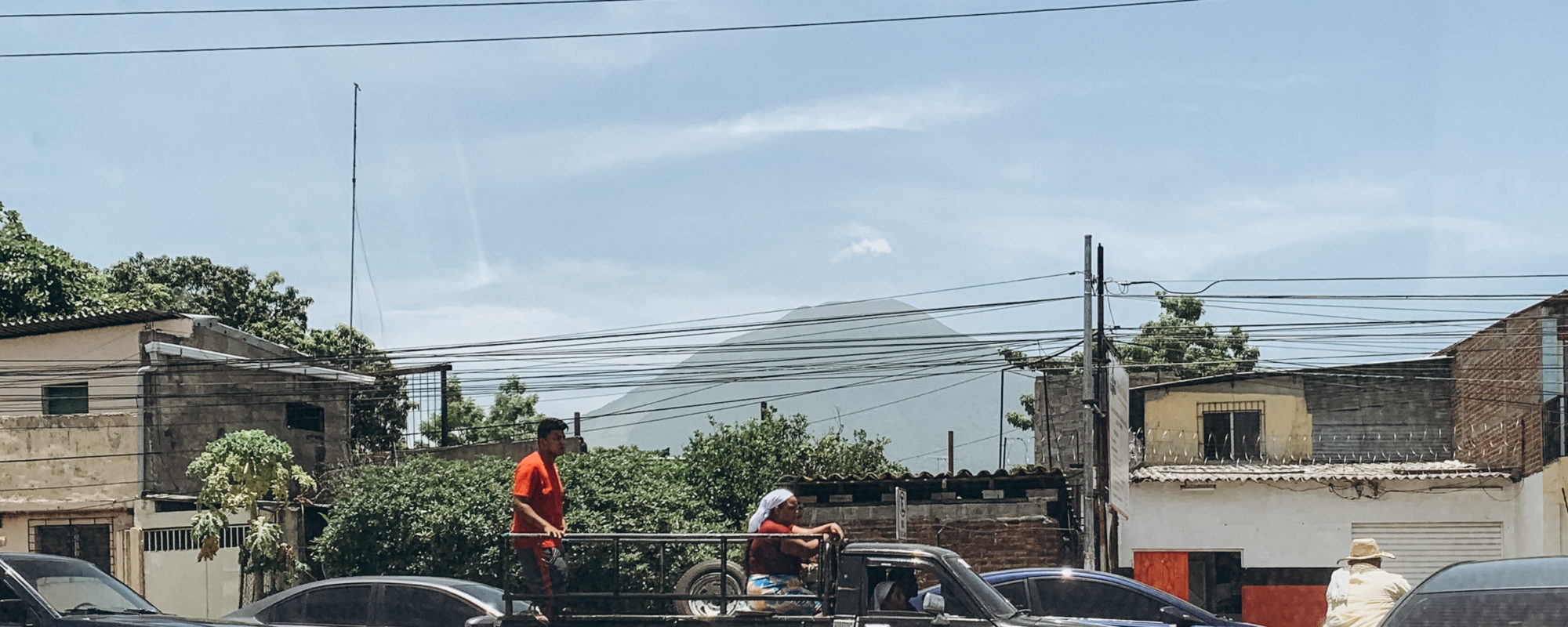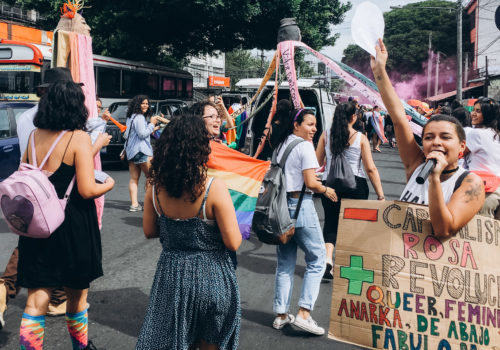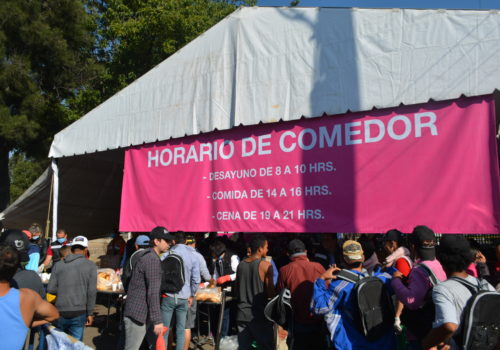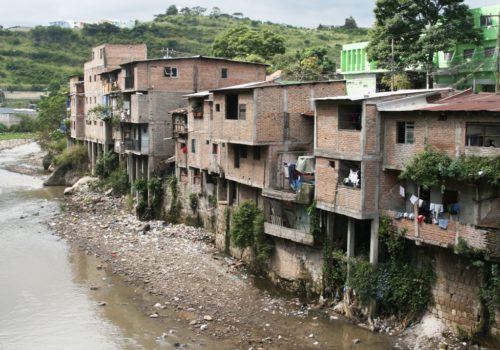SAN SALVADOR — I know from my experience as an attorney in the United States that what the law says on paper has only a fraction to do with what plays out in courtrooms. So when I met a Salvadoran lawyer named José, I mentioned I was eager to observe a hearing to see for myself how the Salvadoran judicial system is addressing the country’s crime epidemic. He agreed to let me tag along to a hearing for one of his clients, a young man I’ll call Mauricio.
We set off before 6:00 on Monday morning. San Miguel, the third largest city in El Salvador, should have been about a two-and-a-half hour drive east of the capital. The hearing wouldn’t start until 10:00, but the curvy two-lane highway can be unpredictable and José didn’t want to be late. Once we got on the road, I could see what he meant. Although we left early enough to beat the worst of San Salvador’s notorious traffic, we were often stuck behind slow-moving trucks and buses as we wound through fields of corn. Everything was green from recent rains. We stopped on a bridge over the Lempa River and I watched white egrets wading on the shore. José pointed out the ruins of another bridge nearby.
“That was bombed by guerrillas during the Civil War,” he told me, playing tour guide as he sipped coffee from a thermos. “See that dam over there? The water seems kind of low for the rainy season.” The state of the rains and impact of climate change has been a common topic of conversation throughout my time in El Salvador.
As we drove on, José explained a little bit about the case. He told me that although he had spent all weekend preparing, he wasn’t even sure the hearing would take place. He had not been able to confirm that Mauricio had been transferred from the prison where he was being held, and he hadn’t been able to visit or speak to him for some time: Soon after taking office in June 2019, President Nayib Bukele’s security minister announced a “state of emergency” in the country’s prisons, cutting off all contact between prisoners and the outside world.
“Can they seriously do that?” I asked. “I mean, you’re his lawyer. How are you supposed to defend him if you can’t even talk to him?”
José shrugged. He hoped to arrive at the court in time to have a few words with Mauricio before the hearing, he told me, but there was no guarantee. As we approached the city, the San Miguel volcano loomed to our right.
The case
Mauricio had been arrested in early 2018, one of the last of about 150 people from his community who were detained in a massive raid and charged with membership in a “terrorist organization” among other crimes. At the time of his arrest, the police published a press release with his full name and alleged crimes, which was reprinted without comment in both of the major newspapers. (I have chosen to keep his identity confidential here nevertheless out of respect for him and his family.) From what I understand, the charges against Mauricio and his co-defendants were based on the testimony of a sole confidential informant, whom their defense attorneys have not been permitted to depose. Mauricio maintains he is innocent of the charges and does not belong to a gang or any other “terrorist organization.”
Defendants in criminal cases can apparently be held for two years without a conviction, so some of Mauricio’s co-defendants are approaching their release dates. Others had already been released pending trial. Mauricio was one of around 100 still detained, and who would have to be transferred from prisons around the country in order to appear for their hearing at the Juzgado Especializado de Instrucción, a “specialized tribunal,” in San Miguel.
The specialized tribunals, created in early 2007 to prosecute “organized crime,” have two courtrooms: one for the juez de instrucción, a judge who conducts preliminary hearings like the one we were attending, and the juez de sentencia, who presides over the trial and sentencing phases. The prosecuting attorney has what seems like complete discretion about whether to file a particular case in a juzgado especializado or a regular criminal court. Some 95 percent of the cases in these specialized tribunals are gang-related, according to a Harvard Law School study. (I have been studying the complicated history of anti-gang legislation over the last month and am still learning about how it is applied.)
Gang membership was first criminalized in a 2003 anti-gang law (Ley Anti-Maras), as part of the larger Mano Dura or “Iron Fist” crackdown. The initial law resulted in mass arrests, leading to severe prison overcrowding and the dismissal of many of the charges by judges who refused to apply the law. Those judges were vindicated in 2004 when the Supreme Court held that the law, which arbitrarily penalized individuals based on factors such as their physical appearance, was unconstitutional. Over the next several years, there was escalating conflict between the legislative and executive branches—which have argued that “traditional” judges are overly concerned with defendants’ rights and insufficiently committed to stopping gang violence—and the courts, which sought to maintain their independence and uphold the constitution.
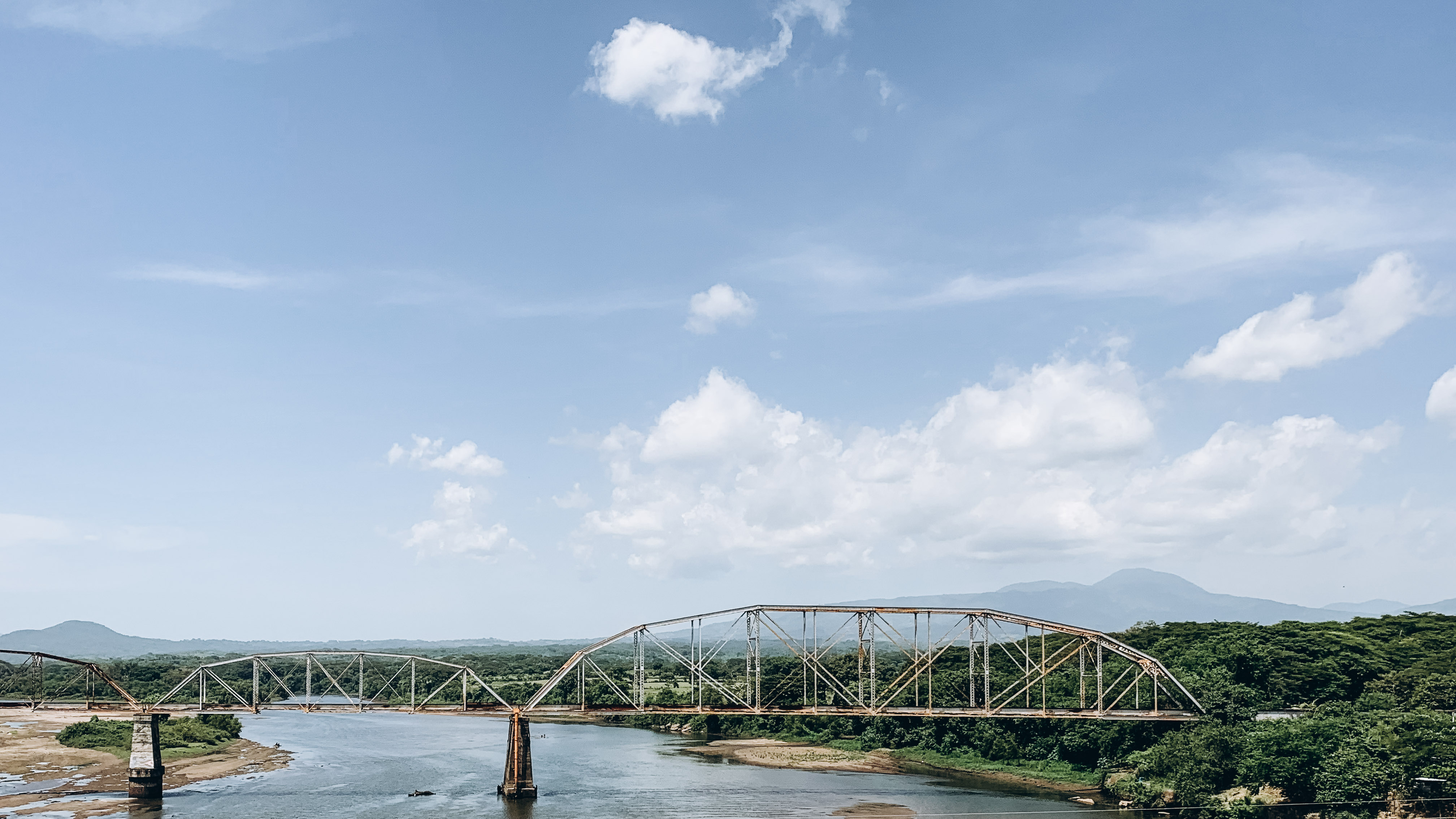
The current law was introduced in 2006, criminalizing membership in a “terrorist organization,” which includes street gangs such as MS-13 and 18th Street. The specialized tribunals were created soon after, and have been criticized by the United Nations and others for being tailored to circumvent the more independent courts that had refused to apply the earlier laws.
The courthouse
San Miguel is known for its oppressive heat, and it was already over 90 degrees when we parked on a residential street a little before 9:00. Dozens of people, presumably family members of the accused, clustered in the shade of a large tree across from the court. Some sat on plastic chairs and a hammock had been strung up between the branches. The curb was littered with food wrappings. I wondered how long they had been waiting there.
A woman in a blue patterned dress and silver sandals emerged from the crowd and approached us. Mauricio’s mother, whom I’ll call “Doña Ana,” wore her graying hair in a long braided rope down her back. Her round face looked sad and resigned. She hadn’t heard anything about her son’s transfer either and was worried about whether Mauricio had eaten. José explained that when prisoners are transferred for hearing, they are held at police holding cells called bartolinas, which do not provide food. It is therefore the family’s responsibility to bring meals to their loved ones. Since Doña Ana didn’t know where Mauricio was being held, she hadn’t been able to bring him anything, and was concerned he might have been transferred over the weekend and had had to go several days without eating. José didn’t have any answers for her so we headed inside.
The courthouse looked like any of the other houses on the street apart from a sign saying Juzgado Especializado de Instrucción and the fact that the portón, the ubiquitous heavy black garage door, was wide open. Just inside, a middle-aged uniformed security guard leaned against the wall. A female security guard sitting at a table with a sign-in sheet checked our documents and signed us in. Despite the fact that it was a specialized court dedicated to prosecuting organized crime, there was less security here than at a US immigration court or even a San Salvador supermarket. There were no metal detectors, and no one even glanced inside our bags.
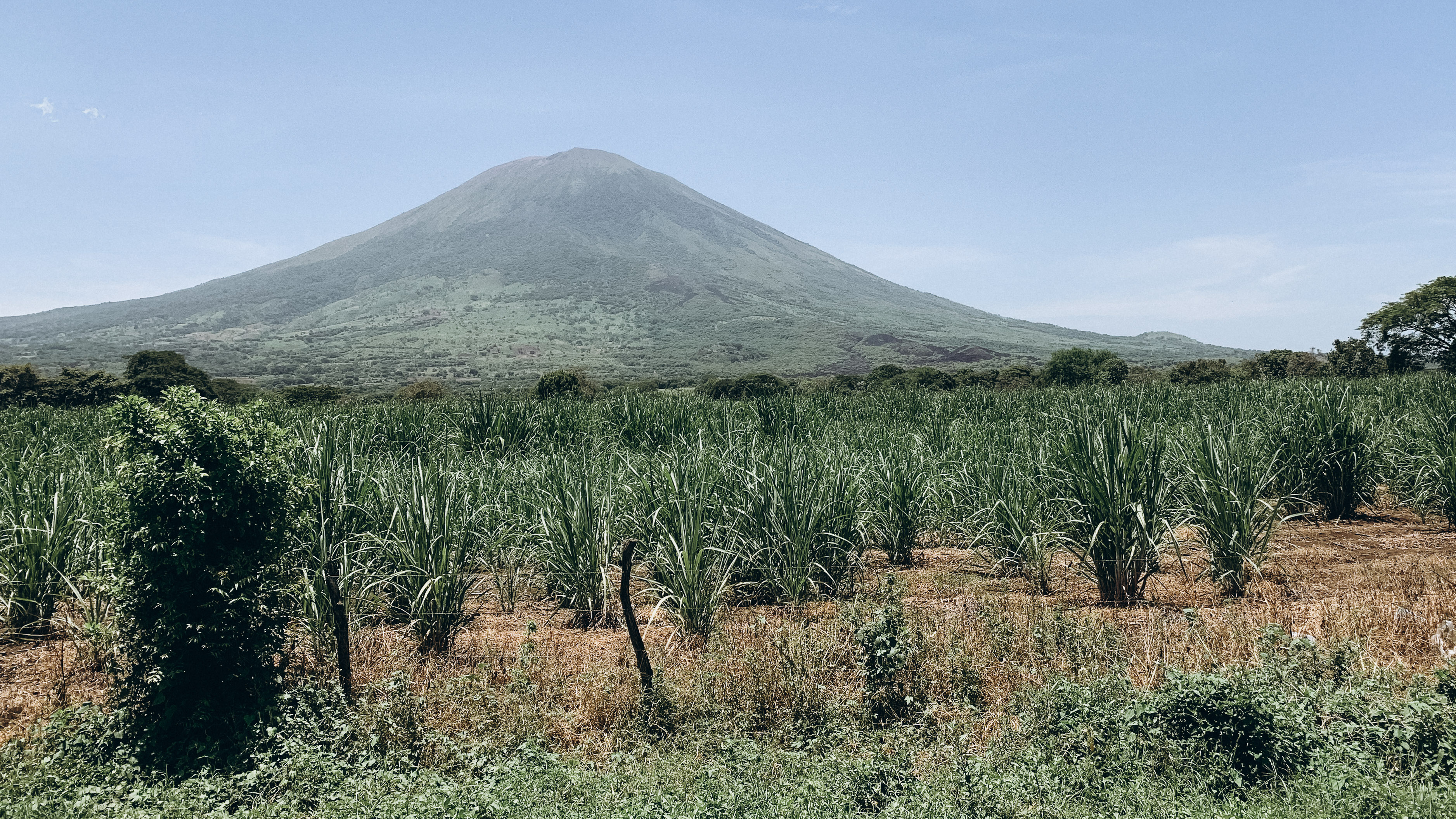
The waiting area was a shabby courtyard inside the house. Huge fans whirring overhead did little to dispel the hot air. When we arrived, the courtyard was empty apart from a single prisoner, a skinny young man in the typical prison uniform: white T-shirt, white shorts and flipflops. He had wispy chin hair and injuries to the right side of his face, and he was handcuffed behind his back, causing him to stoop over and look at the floor. He was surrounded by four heavily armed National Civil Police (PNC) officers in blue camouflage. One of them hunched over the assault rifle across his lap and smiled at something on his phone.
As 10:00 approached, more defense attorneys began to arrive. They greeted each other and I heard the same refrain between them: “A ver qué dicen; a ver qué pasa.” (“We will see what they say; we will see what happens.”) Some reviewed documents and others flipped through well-thumbed copies of the penal code. A woman in a bright blue and slightly mismatched suit arrived, refusing to make eye contact with any of them. José told me she was the prosecutor. Her demeanor surprised me: Even in the highly contentious immigration courts in the United States, prosecutors and defense attorneys make an effort to be collegial. But here, the lack of civility is apparently normal, especially outside the capital. Later, another prosecutor came in, a young woman with a ponytail, gold hoop earrings and a black cap-sleeved dress. She, too, kept her back to the defense attorneys.
The courtroom was air-conditioned and furnished with several rows of folding chairs. At the front of the room, two tables (one for the prosecution and another for the defense) faced a low black cubicle, behind which stood a cushioned desk chair and a drooping Salvadoran flag. To one side, there was a shelf with some recording equipment, and on the other a wooden box with a one-way mirror for confidential witnesses. The witness box was soon removed to make room as the defendants (imputados) began to arrive. Apparently, there would be no testimony at this hearing.
Even in the highly contentious immigration courts in the United States, prosecutors and defense attorneys make an effort to be collegial. But here, the lack of civility is apparently normal, especially outside the capital.
One female defense attorney discreetly sprayed herself with perfume as the lawyers were asked to crowd our folding chairs closer together and additional rows were added. I knew that as a tall blonde, I would not blend in with the crowd, but I tried to be as discreet as possible so that I would not be asked to leave. I felt slightly guilty for taking up a seat in the crowded courtroom, but by the time it occurred to me to offer to move to make room, I was so far from the door that it would have been almost impossible for me to gracefully exit. Indeed, as it turned out, no one seemed to notice or care about my presence.
The imputados assembling in the rows behind the attorneys were those who had been released pending trial. The court clerk (colaborador), a young man with trendy eyeglasses in a blue button-down shirt, read out names. He struggled to match defendants with their attorneys or even verify how many cases were being heard that morning. The defense attorney next to me, a large man in an oversized suit, joked that with luck, all the defendants would be identified in time for the lunch break. It was nearly 11:00 and there was still no word about Mauricio or the other prisoners.
I tried to observe the imputados without staring. It was hard to imagine that these people were dangerous criminals. Most of them were skinny and dark-skinned, dressed in clean but casual clothing. Most were in jeans and T-shirts, many of which had US or English-language logos that were jarring to see in this context. One man wore a baseball cap reading “Air Force One Presidential Crew”; another sported a T-shirt that said “U.S. Army”; still another wore a bright orange T-shirt with the Reese’s peanut butter cup logo. A young man in a blue and white polo shirt, his hair neatly gelled into a side part, looked young and scared.
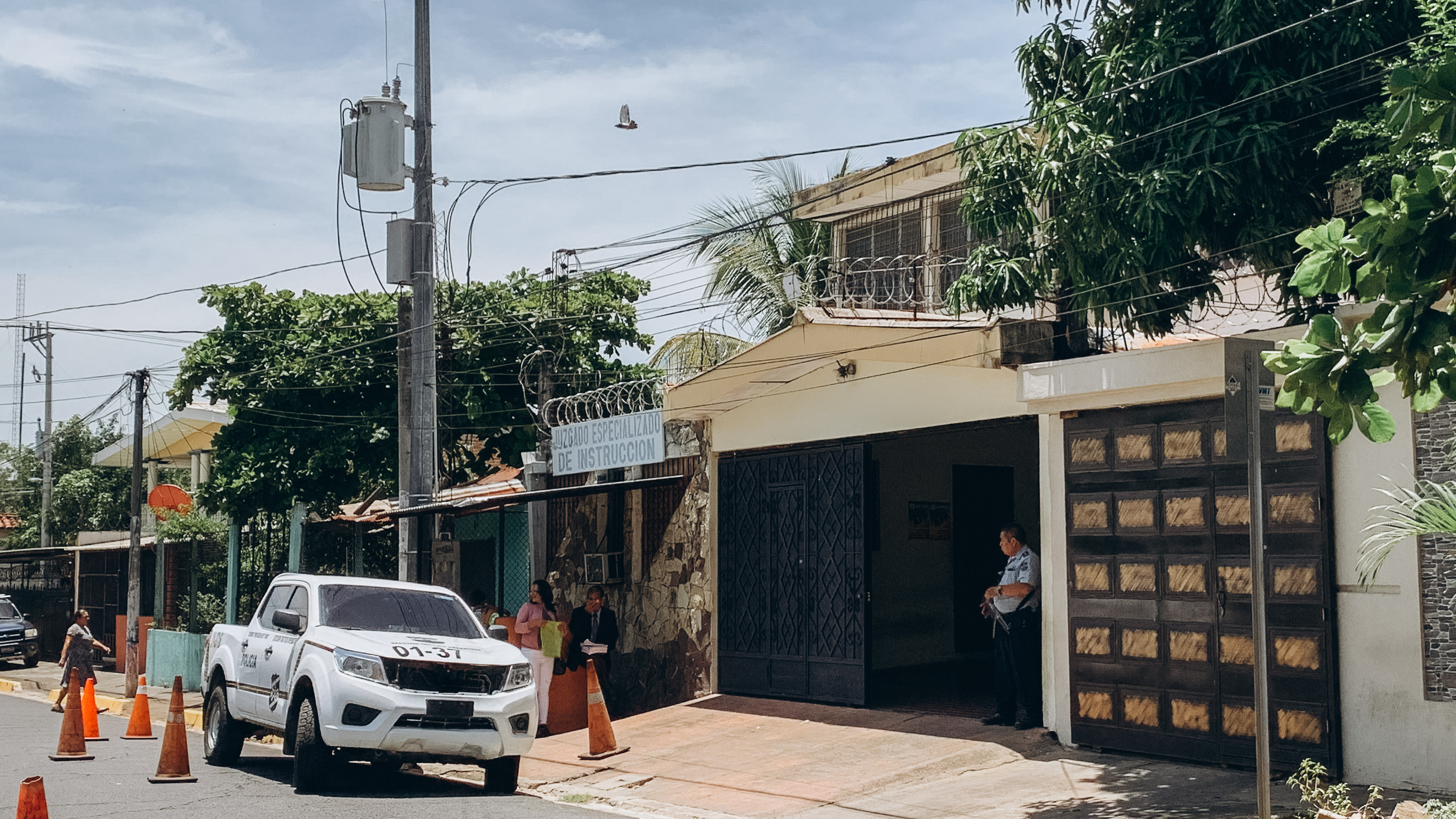
A surprising number of the imputados appeared to be older, well over 40, and there were several women. One young woman wore a T-shirt with a silk-screened photograph of a baby. Later, when she moved over to sit near me, I saw she was wearing Mickey Mouse sneakers on her small feet. As the colaborador read out the names for the attorneys’ benefit, a sixtyish man with white hair called out, “Here!” as if it were a classroom roll call. The colaborador smiled indulgently and told him it wasn’t necessary to respond.
When the judge finally came in, hardly anyone noticed over the noise and chaos. He wasn’t announced or wearing a robe, just a well-tailored gray suit. He looked young, maybe in his late thirties or early forties, and had a neatly trimmed beard and frameless glasses. José told me he was the fourth judge to hear this particular case. A bailiff in a gray short-sleeved button-down shirt stood behind the judge and I continued to marvel at how comparatively little security there was here in this Specialized Tribunal for Organized Crime. The judge apologized for the delay in starting.
Just before 11:30, an hour and a half after the hearing had been scheduled to begin, the colaborador confirmed that no prisoners had been transferred. The defense attorneys whose clients were behind bars were asked to leave to make room for more imputados. The failure to transfer them was blamed on a judicial employee strike but José told me he thought it was more likely that the last-minute scheduling hadn’t left enough time to coordinate the transfer.
“I’m sorry you wasted a whole day coming out here for nothing,” I said. “I would be furious if I had spent all weekend preparing and driven all the way here only to have to go back home!” José shrugged. It was just another day for him.
Likewise, although Doña Ana had sacrificed a day of work as a caregiver and paid for transportation, she seemed neither surprised nor outraged. She was looking forward to her older son—also a defendant in the case who was arrested several months before his younger brother—being released at the end of his two years. She and José agreed to stay in touch.
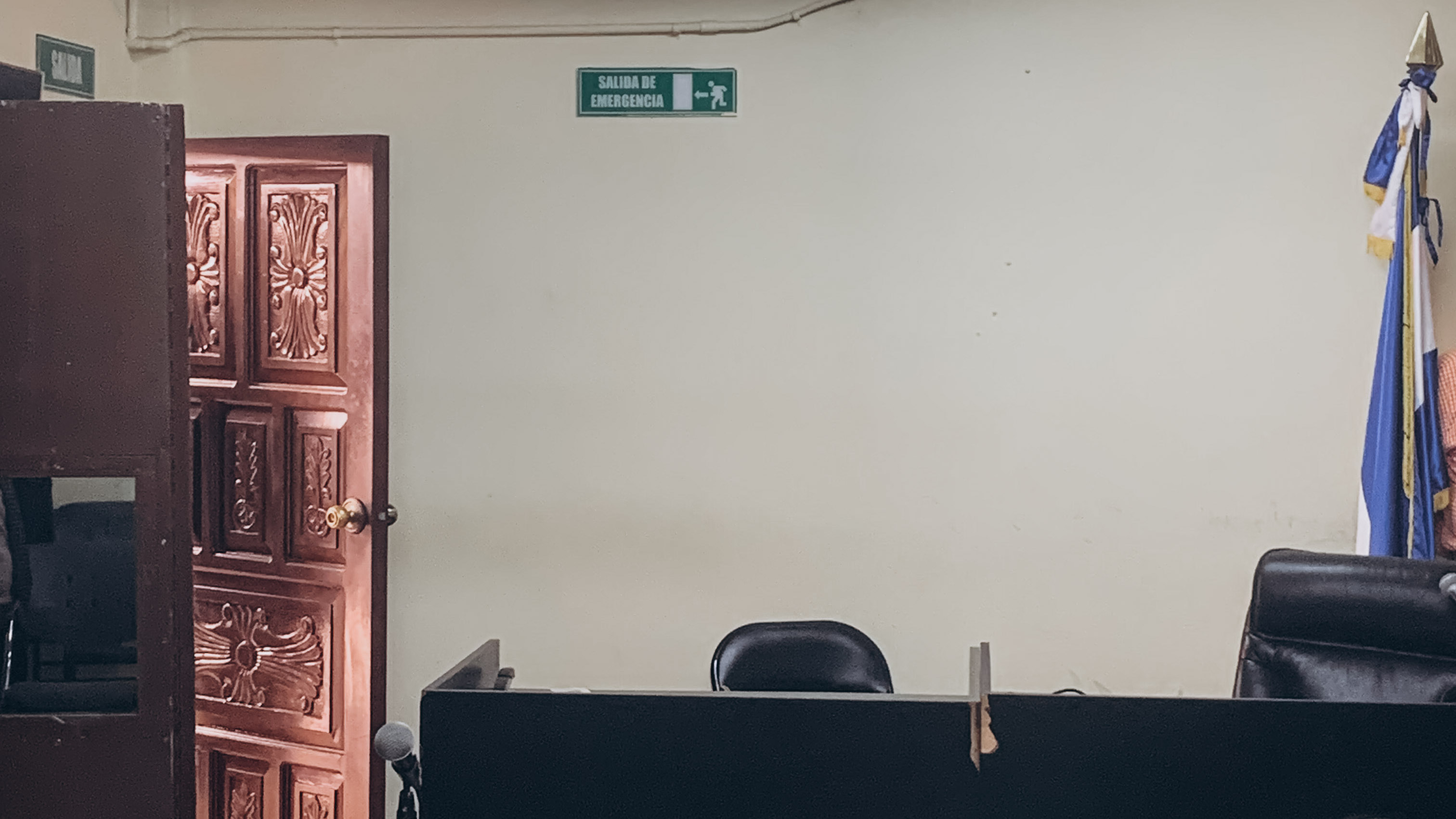
The mothers
As we walked back to the car, we came upon another group of women who had clustered on the street corner. They were the family members of some of the imputados who had come to court that day and asked José for an update. An older woman in a blue flowered dress was particularly eager to tell me her story. Her name was María and she was delighted to learn I was an attorney.
“We need women attorneys to fight for us,” she said. “Women understand. No one helps us women. We need to stick together. Our rights are being violated. They are taking our sons away.”
María’s son, one of the imputados, is in his forties and the sole source of support for his aging parents and his own wife and three children. She began to list injustices, begging to be heard. Her husband, like many in their farming community, has gone blind, she told me; many of their neighbors also suffer from kidney failure. María’s son earns only $5 per day working in the fields. That was the real crime, she said: exploitation.
“They call us terrorists but we aren’t,” she cried, pulling up the neckline of her dress to wipe the tears from her eyes. “We are working people. We are Christians. We all belong to the same Evangelical church,” she said, gesturing at the women around her. “My son serves his community. We can’t afford a lawyer. Who will speak up for our rights? Who will speak for the mothers?”
The human rights advocate
Back in San Salvador, I met Miguel Montenegro, the director of the Human Rights Commission of El Salvador (CDHES), at the commission’s office in the bustling Colonia Médica neighborhood, home to a number of hospitals. Montenegro had held a news conference with some of the members of Mauricio’s community, decrying the mass arrests and detentions, and I wanted to get his perspective on the context for the case. The CDHES is a secular non-governmental organization formed in the late 1970s in response to human rights abuses during the buildup to the Civil War. On my way into the meeting room, I couldn’t help but notice the pictures lining the passageway, photos of the commission’s founders and several other employees who had been murdered or disappeared by state security forces during the war.
Montenegro told me that some human rights organizations are afraid to work with communities that are accused of harboring gang members. “It’s complicated,” he explained. “People are afraid; I myself am afraid. We could be attacked or accused by criminals or by the state or by death squads or by some crazy person who doesn’t like what we are doing.” He confirmed that many of the accused insist on their innocence, and that some of those who had been arrested were children and nursing mothers.
Montenegro criticized the justice system, which he described as “corrupt, obedient, and timid,” as well as the government’s human rights ombudsman, who he thought should be much more active. The current criminal justice system is a natural continuation of Mano Dura policies introduced by the right-wing party ARENA in 2003 and continued by the left-wing FMLN when it came to power. Those policies are now being applied with “even more” intensity by President Bukele’s administration.
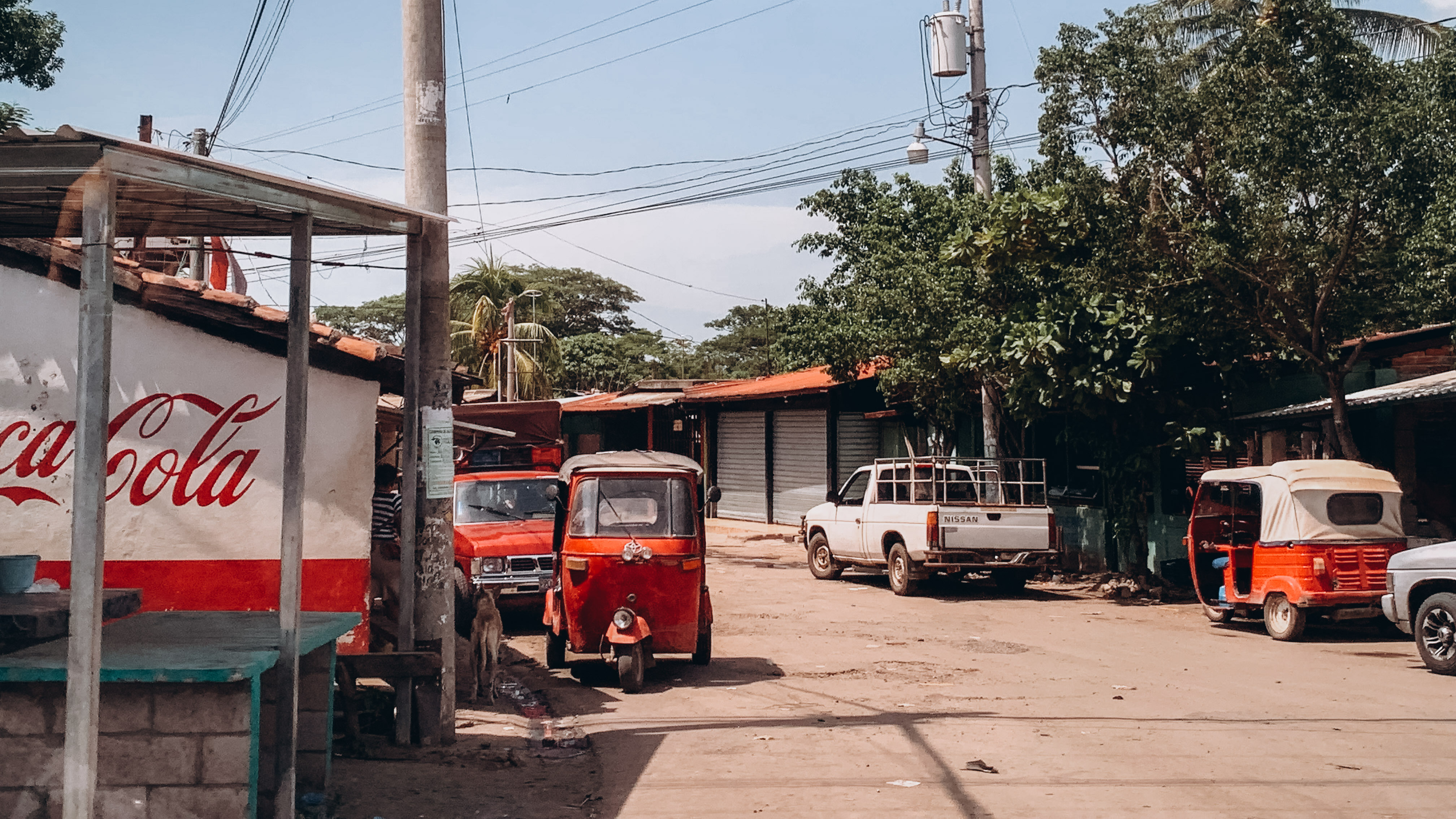
The purpose of the raids is “to clean up and terrorize the population, and to gather information,” Montenegro said. “They are saturating the courts and announcing the arrests in the press, and those who are arrested are branded, even if they are proven innocent.” He compared the strategy to the “scorched earth” military operations that led to some of the worst atrocities of the Civil War, recalling in particular the notorious case of El Mozote, in which an entire village—mostly women and children—was slaughtered by the Salvadoran military in 1981.
Montenegro didn’t know why the residents of Mauricio’s community had been targeted, but said the eastern part of the country has experienced several huge raids. Acknowledging there may well be a gang presence there, he said, “These people are threatened and terrorized by the gangs on one side and by the PNC and the army who see everyone from that community as suspicious. They target whole families who are suspected to be connected to the gangs. It’s very difficult for youths to defend themselves with these extraordinary measures in the prisons, they aren’t allowed to see family or even their defense attorneys. Their right to defend themselves is being violated.”
Despite the concerns of human rights advocates and the families of the imputados, Mano Dura policies seem broadly accepted in Salvadoran society. The homicide rate in El Salvador is one of the highest in the world, and much of the violence is blamed on street gangs. There is a common perception that defending the rights of criminals is at odds with protecting victims and maintaining public order. At brunch with a friend’s family in a gated community, I listened as her mother approvingly recounted a story she had seen on the news, in which police officers had gone door to door in a poor neighborhood looking for gang safehouses and arresting those who did not “belong.” Indeed, more than one person has told me the answer to the gang problem is simply to kill all the gang members.
On July 16, I attended a forum on “Public Security Policy for the Guarantee of Human Rights in El Salvador.” In a conference room at the luxurious Sheraton Presidente Hotel, the executive director of the Ministry of Justice and Public Security, Ricardo Santamaría, spoke about the new government’s anti-violence strategy, arguing that human rights advocates need to become “more flexible.” While acknowledging the importance of efforts to stop extrajudicial killings and wrongful arrests—“but not at any cost”—he emphasized that the problem with earlier crackdowns had been the government’s failure to maintain “physical control,” partly blaming it on the families of gang members. President Bukele’s Territorial Control Plan (#PlanControlTerritorial) is aimed at “taking back” government control of gang territories. That language seems to be in line with the “scorched earth” strategy described by Montenegro.
As an immigration attorney in the United States, I represented dozens of Salvadorans fleeing gang violence, and several who had been victimized by the police or army. In order to prevail in an asylum claim, an applicant must show that he or she fears persecution either by the government or persecutors the government is unable or unwilling to control. The specialized tribunals for organized crime are arguably an example of the Salvadoran government’s willingness to control the street gangs whose activities drive people and families from their homes, but serious doubts have been raised about whether those measures represent a good-faith effort to address the causes of gang violence. Indeed, there is reason to believe that mass arrests and lengthy detentions without adequate judicial review or access to counsel are themselves forms of government persecution. I had hoped to gain expertise about the effectiveness of the Salvadoran criminal justice system by attending a court hearing, but the experience raised yet more questions that I look forward to continuing to explore during my fellowship.

